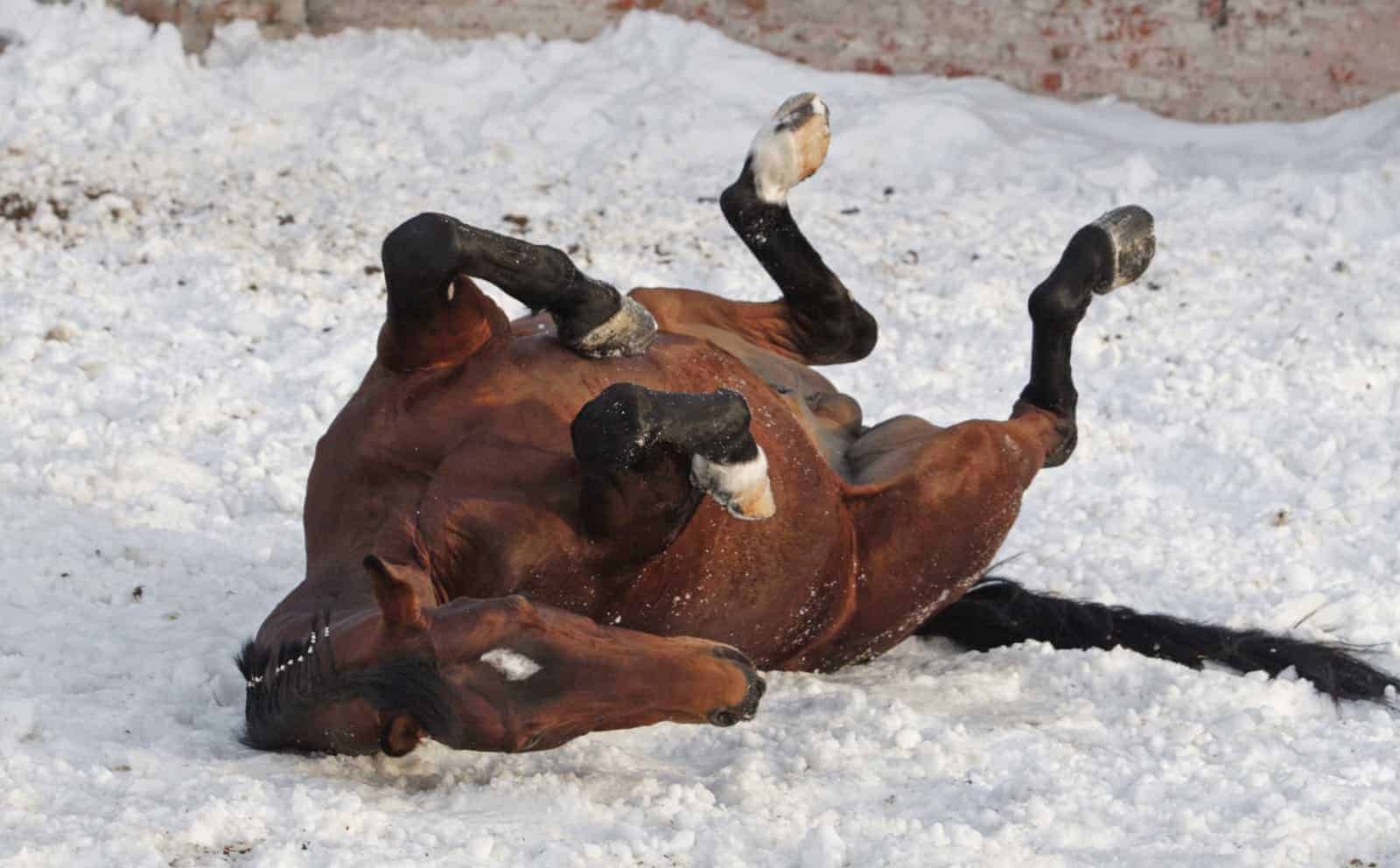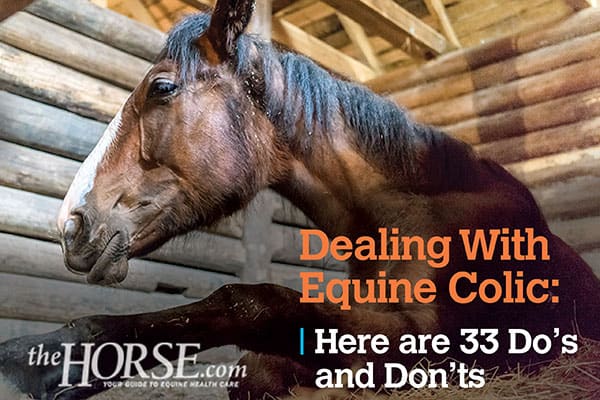Cold Weather Horse Colic
- Topics: Article, Colic, Horse Care, Water & Electrolytes, Winter Care

Well here we are again … winter! The average horse owner is likely well-acquainted with his or her horse’s colic risk regardless of the season, but with cold weather come complicating factors that all owners should prepare for.
The No. 1 cause of colic during winter is a lack of fresh, unfrozen water. Horses must drink 10-12 gallons of fresh water every day and can dehydrate quickly if water is unavailable. Horses that aren’t getting enough water are at a greater risk for conditions such as simple indigestion or impaction. A frozen water trough is the usual dehydration culprit, but occasionally horses choose to not drink water simply because it is so cold. Heaters for your troughs and buckets are therefore an absolute “must” to ensure continual access to water in the winter. Keep in mind that electrolyte supplements are not a suitable water substitute and do not mitigate the risk of dehydration. There is nothing wrong with adding (appropriate amounts of) electrolytes to your horse’s diet, but offer them in a separate container, leaving the main water supply clean and fresh. Horses might attempt to eat snow to compensate for some fluid loss, but snow is largely composed of air and will not provide the volume of water necessary to hydrate a 1,000-pound animal.
The treatment for a case of dehydration is fairly obvious: fluid replacement. On the farm, your veterinarian will most likely pass a stomach tube through the horse’s nose and administer oral fluids as well as an intestinal lubricant such as mineral oil. In cases of moderate or severe dehydration, intravenous fluids can be administered via catheter for a much quicker delivery route, but most veterinarians will choose to administer these types of treatments in a more controlled clinic setting. Use of oral or injectable anti-inflammatories such as flunixin meglumine (Banamine) and phenylbutazone (Bute) is also commonplace.
The second colic risk factor associated with winter is exposure to cold temperatures. A horse with a full hair coat should have no trouble staying warm on the coldest of winter days, even without a blanket, as long as he remains dry and has access to shelter. Blankets are useful for horses that have been body-clipped because they have lost the added layer of insulation the hair provides, but blankets must be applied responsibly. Always replace or remove a soaked blanket immediately because the moisture will freeze, trapping the cold and causing the horse to lose precious body heat. If your horse wears a blanket, there should be at least two or three on hand so a soaked article can be traded out for a dry one.

Increasing the forage in a horse’s diet will help prevent impactions and will also reduce the risk of hypothermia (low body temperature). Horses require more calories in the winter just to stay warm, and the body’s fermentation process for digesting hay and roughage also generates heat that helps maintain body temperature. The best colic prevention in this situation is to allow a horse 24-hour forage access so the fermentation process never slows or stops. Adding grain and sweet feed supplements (if warranted) is fine, but they do not provide the same warming and digestive benefits as a continual forage supply.
Shelter is equally important, even to those horses that are accustomed to being outside all the time. A permanent structure built to withstand the force of strong winds and the weight of excessive snow accumulation is ideal, but temporary structures such as canvas or vinyl canopies with steel frames will also work if secured properly.
If you observe your horse experiencing mild hypothermia (a body temperature lower than 99.5°F, signs of lethargy, and a reluctance to move), remove him from the elements so he can thaw out and recover; the sooner he gets out of the cold, the better. For owners that don’t have a barn, a garage can be a temporary substitute. You can also use warm water baths and blankets to speed up the warming process.
Nothing seems to function quite as well when it’s really cold, and horses are no exception. Hypothermia or dehydration-induced colic episodes are common occurrences for horses living in winter climates. The good news is that with a few management and husbandry changes, these episodes should occur to a lesser degree and with far less frequency.
Written by:
Scott Leibsle, DVM
Related Articles
Stay on top of the most recent Horse Health news with















